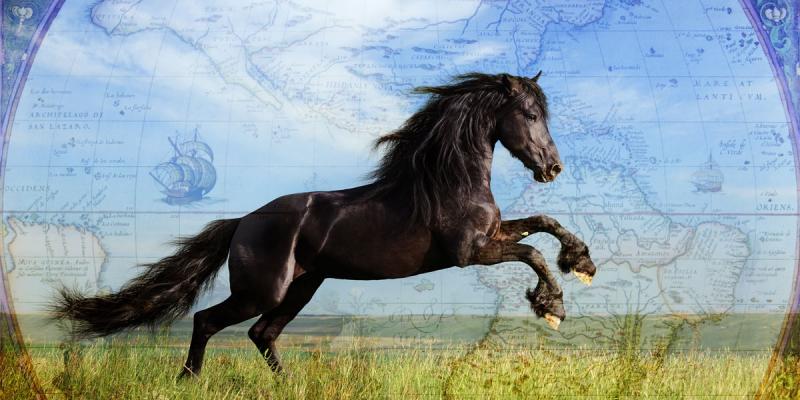You are here
New Evidence for Horses in America
One of the most persistent questions about the Book of Mormon has been the mention of horses among the Nephites, Lamanites, and Jaredites. Scientists, historians, and other scholars have long maintained the view that there were no horses in the Americas during Book of Mormon times. The most recent issue of BYU Studies Quarterly includes an article by Wade Miller and Matt Roper with new evidence challenging this view.
The article, entitled “Animals in the Book of Mormon: Challenges and Perspectives,” provides an overview of the issue and discusses some of the complexity involved in the study of ancient animal remains. They report on a recent radiocarbon test of a horse bone found in Mexico, dated to ca. 500 BC:
Recently, one of the authors (Miller) received results from C-14 dating of horse fossils. This material came from his field research in Mexico. A date of 2,540 years before the present was provided by the Radiocarbon Laboratory at the University of Arizona. This would place the horse in Mexico during the time of the Nephites.
If this horse fossil date is correct, it comes only a little after Nephi arrived in the promised land (ca. 580 BC) and reported seeing horses there (1 Nephi 18:25), and shortly before Enos (ca. 420 BC) reported the Nephites having “many horses” (Enos 1:21).
Miller, an internationally respected geologist and paleontologist, is conducting on-going research dating horse and other fossils uncovered by archaeological and paleontological field work. Previous specimens have also yielded pre-Columbian/post-Pleistocene dates for horse and several other large mammals typically thought to be extinct after the Pleistocene. But this is the first horse bone tested which dates to Nephite times.1
While the evidence for horses in pre-Columbian America is encouraging, it still requires some caution. Additional C-14 dating from other samples will be needed to change the prevailing view. Until then, this evidence should be considered provisional, but promising.
Miller currently has several other specimens that need to be tested and is seeking funding for that purpose. Donors interested in supporting this work can do so through Book of Mormon Central.
- 1. For addition pre-Columbian dated horse bones, see Miller and Roper, “Animals in the Book of Mormon,” 164; Wade Miller, Science and the Book of Mormon: Cureloms, Cumoms, Horses and More (Laguna Niguel, California: KCT & Associates, 2010), 82. For a review, see Neal Rappleye, “A Scientist Looks at Book of Mormon Anachronisms,” Interpreter: A Journal of Mormon Scripture 10 (2014): 123–131.
Subscribe
Get the latest updates on Book of Mormon topics and research for free








